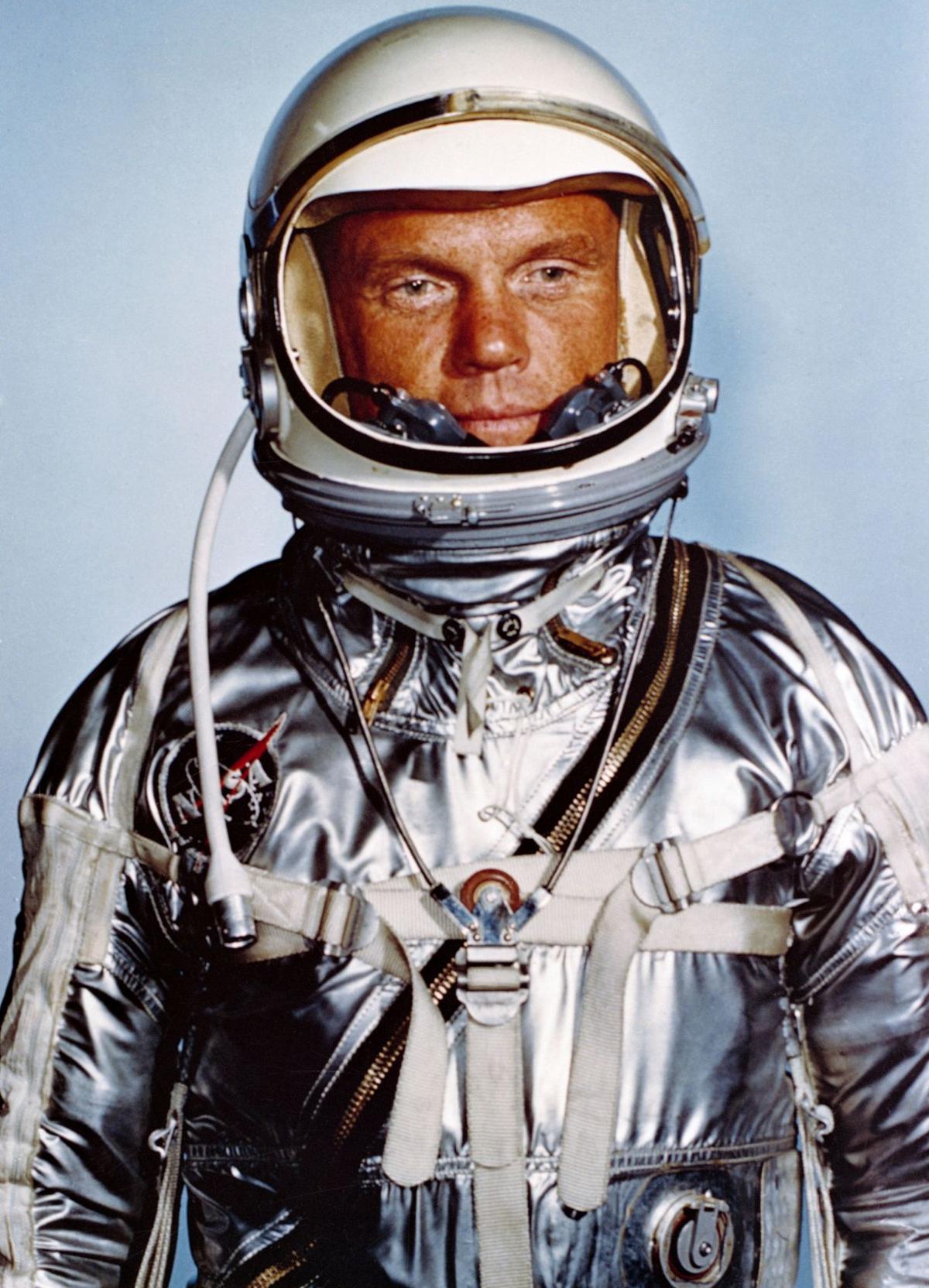- John Orbit Real Men Real Life Twitter
- John Orbit Lpsg
- Rmrl Photos
- John Obituary Obituary 2018
- John Orbit Kiss
36.1k Followers, 1,751 Following, 4,602 Posts - See Instagram photos and videos from John Orbit’s RMRL (@realmenreallife). John Herschel Glenn Jr. (July 18, 1921 – December 8, 2016) was a United States Marine Corps aviator, engineer, astronaut, businessman and politician. He was the third American in space, and the first American to orbit the Earth, circling it three times in 1962. Retiree 1099-R forms are NOW AVAILABLE in ORBIT. Live phone assistance is available from 8:30 am to 4:30 pm M-F, lunch break 11:30am -12:30pm.
This article is an excerpt from the Shortform summary of 'Hidden Figures' by Margot Lee Shetterly. Shortform has the world's best summaries of books you should be reading.
Like this article? Sign up for a free trial here.
Who was John Glenn in Hidden Figures? What did John Glenn, Katherine Johnson, and the other human computers have to do with space travel?
John Glenn, Katherine Johnson, and their team, called the Space Task Group, helped launch Glenn into space, making him the first man to orbit the Earth.
Sputnik and the Focus on Space Flight
The launch of the Russian vessel Sputnik brought major changes to the women of West Computing. There was less of a need for general computing skills and a greater demand for mathematicians with specialized knowledge. As such, West Computing was shuttered and its employees reassigned to smaller groups organized around specific tasks.
Katherine also gained a more prominent role in the space program as she became attached to the Flight Research Division, working closely with an engineering group called the Pilotless Aircraft Research Division (PARD), which specialized in rocketry. Katherine was integral to the publication of technical reports that enabled the space program to put astronauts into orbit. She overcame a great deal of institutional sexism, but she proved her value to the program with her obvious brilliance, competence, and passion for the mission. John Glenn and Katherine Johnson later worked together.

Katherine Johnson, John Glenn, and the Space Task Group

NASA assembled a brain trust at Langley, called the Space Task Group. This was a semi-autonomous working group, composed mainly of engineers from Flight Research and PARD. Their mission, codenamed Project Mercury, was to launch a manned craft into orbit, research the effect of space travel on humans, and ensure safe reentry to Earth of both the astronaut and the spacecraft. John Glenn, Katherine Johnson, and others all later became essential to achieving these goals.
Katherine’s workspace was abuzz with talk of space. NASA’s top engineers from Flight Research and PARD were discussing orbital mechanics, rocket propulsion, reentry, solar system physics, and trajectories. Katherine hung on every word of these discussions, angling for every opportunity she could get to hear even snippets of conversation. She yearned to be part of these meetings and conversations and knew that she had valuable skills to offer. John Glenn’s Hidden Figures role had yet to be determined; the mission has just begun, and they don’t yet have an astronaut.
Langley presented engineers with a grueling research review process. To get a technical report published, an engineer needed to present it at an editorial meeting, during which a committee of subject matter experts would review and scrutinize every detail of the report while grilling the researcher on the soundness of the information within it. The committee was thorough (and often quite harsh) in rooting out inconsistencies and poorly reasoned conclusions. The whole process could take months, even years. John Glenn, Katherine Johnson, and their team might not reach space for years.
Katherine’s Role
Within the Space Task Group, the demands of the work became all-consuming. Staying at work until after ten o’clock at night was normal, but the engineers were laser-focused on achieving their monumental task. Still, there were enormous engineering and physics challenges to overcome in the quest to launch a man into orbit.
Amongst other problems was the issue of selecting an astronaut. Candidates needed to be small enough to fit inside the small cabin of the capsule: only men under five feet eleven inches and under 180 pounds were to be considered. After screening candidates for the appropriate physical, age, education, and background credentials, NASA unveiled the “Mercury Seven” at a 1959 press conference. Their training facility was established at Langley, adjacent to the Space Task Group. Katherine had the opportunity to meet and rub shoulders with this elite cadre, who had suddenly become some of the most famous people in the world. John Glenn and Katherine Johnson would later work together when he was selected as the astronaut.
There was zero room for error, as everything needed to be calibrated perfectly in order to launch the craft and return the astronaut safely. Katherine’s ballistic trajectory tables would determine whether or not the returning astronaut would land near enough to the waiting navy ships to be speedily scooped out of the sea and brought to safety. Even the slightest error would result in the craft missing its mark, putting the astronaut in mortal danger. This was made all the more complicated, as the capsule would both be launching from and landing back on a moving target: the orbiting planet Earth.

But Katherine, as ever, was undaunted by the task. She had proven herself an incomparable mathematician and a quick study with the higher-level conceptual work. She was straightforward with her bosses, telling them, “Tell me where you want the man to land, and I’ll tell you where to send him up.” For John Glenn, Katherine Johnson became a source of security.
Launching John Glenn Into Orbit
The man whom Katherine and her group would be launching into orbit was a name that would become known to history—John Glenn. The logistical hurdles of launching and returning a satellite were complicated enough. Doing so with a human being inside made it vastly more challenging. The extreme temperatures and radiation could be extremely dangerous for Glenn. Moreover, the NASA leadership knew that his death during the mission would be a public relations nightmare for the agency and for the United States as it sought to gain the upper hand in the Cold War. John Glenn and Katherine Johnson had a difficult task ahead of them. Submerged weldingthe mechanic.
The pressure was on, as the Soviets beat the Americans to the punch once again when cosmonaut Gherman Titov completed a seventeen-orbit flight in October 1961. With Gagarin’s successful orbital flight earlier that year, the Russians now had two to the Americans’ zero. With the press hounding NASA for progress updates, the agency announced February 20, 1962 as the date of his launch into orbit.
Julia & IJulia Cheat-sheet (for 18.xxx at MIT) Basics: julialang.org — documentation; juliabox.com — run Julia online github.com/stevengj/julia-mit installation.  Julia is an open-source, multi-platform, high-level, high-performance programming language for technical computing. Julia has an LLVM Low-Level Virtual Machine (LLVM) is a compiler infrastructure to build intermediate and/or binary machine code.-based JIT Just-In-Time compilation occurs at run-time rather than prior to execution, which means it offers both the speed of compiled code and the. Julia & IJulia Cheat-sheet (for 18.xxx at MIT, Julia 1.x) Basics: julialang.org — documentation; juliabox.com — run Julia online /julia-mit installation & tutorial start IJulia browser. Execute input cell in IJulia. Using LinearAlgebra. Load functions for blue-highlighted code below. Defining/changing variables: x = 3.
Julia is an open-source, multi-platform, high-level, high-performance programming language for technical computing. Julia has an LLVM Low-Level Virtual Machine (LLVM) is a compiler infrastructure to build intermediate and/or binary machine code.-based JIT Just-In-Time compilation occurs at run-time rather than prior to execution, which means it offers both the speed of compiled code and the. Julia & IJulia Cheat-sheet (for 18.xxx at MIT, Julia 1.x) Basics: julialang.org — documentation; juliabox.com — run Julia online /julia-mit installation & tutorial start IJulia browser. Execute input cell in IJulia. Using LinearAlgebra. Load functions for blue-highlighted code below. Defining/changing variables: x = 3.
Through the mission preparation, astronauts like Glenn forged close relationships with human computers like Katherine Johnson. As former navy pilots, the astronauts were accustomed to having constant and complete control over their craft. They were distrustful of the onboard electronic computers that would be determining their fate, as they would have little to no control over these functions. But they could and did trust the human computers. To the astronauts, these number-crunching women were the equivalent of test pilots, ensuring the soundness and reliability of their craft before they stepped into it. As Glenn always said, “Get the girl to check the numbers.” For John Glenn, Katherine Johnson and her fellow computers were part of what made space travel possible.

John Orbit Real Men Real Life Twitter
Although they were rarely featured in the televised broadcasts of the mission control center during John Glenn’s historic journey, NASA’s black employees had made immeasurable contributions to America’s space program. They had been the ones calculating the numbers, writing reports, and sparking the nation’s dream of space travel, right alongside their white colleagues. On February 20, at 9:47 Eastern Standard Time, the Friendship 7 rocket carrying John Glenn shot into orbit. After nearly four hours in flight, he returned to the bounds of Earth, with a near-perfect landing—calculated with precision for John Glenn by Katherine Johnson. When the navy scooped Glenn out of the waters while a jubilant nation looked on, few watching on television knew that a black female mathematician from West Virginia had mapped the journey of America’s rendezvous with destiny. John Glenn’s Hidden Figures role became history.
John Orbit Lpsg
John Glenn, Katherine Johnson, and their team accomplished an incredible feat. John Glenn became the first man to orbit the Earth. This great accomplishment in American history could not have been achieved without Katherine Johnson.
———End of Preview———
Rmrl Photos
Like what you just read? Read the rest of the world's best summary of Margot Lee Shetterly's 'Hidden Figures' at Shortform.
John Obituary Obituary 2018
Here's what you'll find in our full Hidden Figures summary:
John Orbit Kiss
- How brave black women were instrumental to the American space race
- How they confronted racism and sexism to forge a better future
- Their enduring legacy in American history
